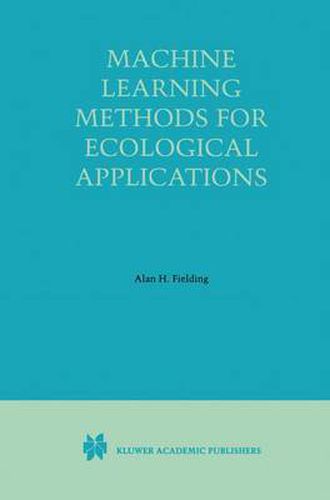Machine Learning Methods for Ecological Applications

Machine Learning Methods for Ecological Applications
This title is printed to order. This book may have been self-published. If so, we cannot guarantee the quality of the content. In the main most books will have gone through the editing process however some may not. We therefore suggest that you be aware of this before ordering this book. If in doubt check either the author or publisher’s details as we are unable to accept any returns unless they are faulty. Please contact us if you have any questions.
The last 25 years have seen a tremendous growth in the application of statistical and modelling techniques to ecological problems. This expansion has been accelerated by the increasing availability of software, books and computing power. However, the suitability of some of these approaches to data analysis, in a relatively knowledge-poor discipline such as ecology, can be questioned on grounds of appropriateness and robustness. One reason for these concerns is that many ecological problems are at best poorly defined and most lack algorithmic solutions. Machine learning methods offer the potential for a different approach to these difficult problems. One definition of machine learning is that it is concerned with inducing knowledge from data, where the data could be patterns in a game of chess or patterns in the species composition of natural communities. Unfortunately ecologists have little experience of these relatively recent and novel approaches to understanding data. This is a problem that is made more complex because there is no simple taxonomy of machine learning methods and there are relatively few examples in the mainstream ecological literature to encourage exploration. This is the first text aimed at introducing machine learning methods to a readership of professional ecologists. All but one of the chapters have been written by ecologists and biologists who highlight the application of a particular method to a particular class of problem. Examples include the identification of species, optimal mate choice, predicting species distributions and modelling landscape features. A group of experienced machine learning workers, who have become interested in environmental problems, have written a chapter that demonstrates how machine learning methods can be used to discover equations that describe the dynamic behaviour of ecological systems. The final chapter reviews “real learning’, offering the potential for greater dialogue between the biological and machine learning communities.
This item is not currently in-stock. It can be ordered online and is expected to ship in 7-14 days
Our stock data is updated periodically, and availability may change throughout the day for in-demand items. Please call the relevant shop for the most current stock information. Prices are subject to change without notice.
Sign in or become a Readings Member to add this title to a wishlist.


